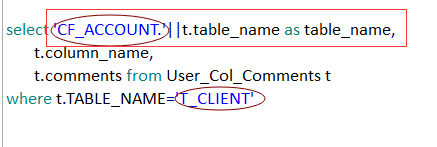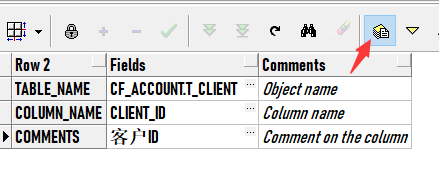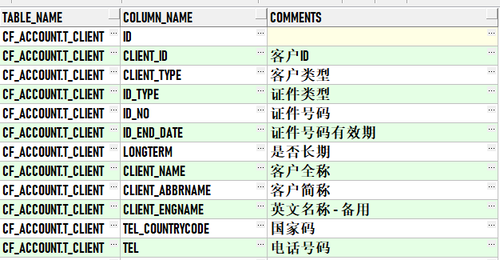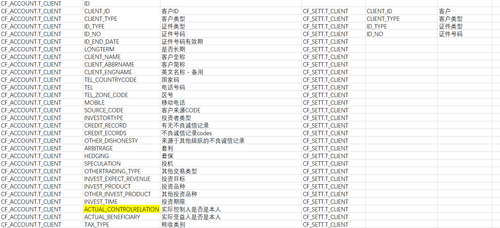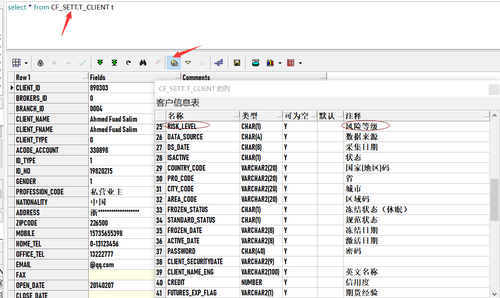如图所示,第一个椭圆中是用户,第二个是目标表名,长方形框起来的语句可以为后期的sql语句做准备。
下面是 User_Col_Comments t的代码。
create or replace view sys.user_col_comments(table_name, column_name, comments)asselect o.name, c.name, co.comment$from sys."_CURRENT_EDITION_OBJ" o, sys.col$ c, sys.com$ cowhere o.owner# = userenv('SCHEMAID') and o.type# in (2, 4) and o.obj# = c.obj# and c.obj# = co.obj#(+) and c.intcol# = co.col#(+) and bitand(c.property, 32) = 0 /* not hidden column */;comment on table SYS.USER_COL_COMMENTS is 'Comments on columns of user''s tables and views';comment on column SYS.USER_COL_COMMENTS.TABLE_NAME is 'Object name';comment on column SYS.USER_COL_COMMENTS.COLUMN_NAME is 'Column name';comment on column SYS.USER_COL_COMMENTS.COMMENTS is 'Comment on the column';点击箭头指向的单个记录查看按钮。
然后效果如下:
右键全选后复制到excel表中。后期可以用notepad++ 来批量编写sql语句。
转换目标的字段是通过下面所示的方式来复制的:查出目标表中的数据后,点击查看单个记录图标,并右键目标表名的描述,会出现可以复制的每条数据的具体字段和描述。目标字段可以复制到excel表中。
点击查看更多内容
为 TA 点赞
评论
共同学习,写下你的评论
评论加载中...
作者其他优质文章
正在加载中
感谢您的支持,我会继续努力的~
扫码打赏,你说多少就多少
赞赏金额会直接到老师账户
支付方式
打开微信扫一扫,即可进行扫码打赏哦


